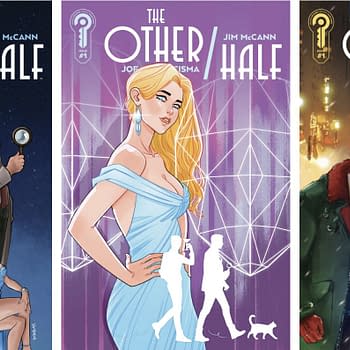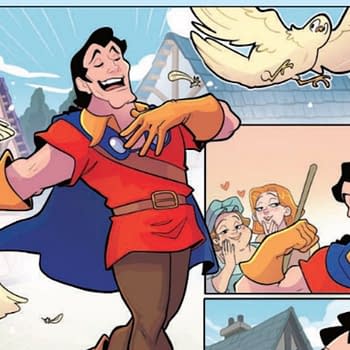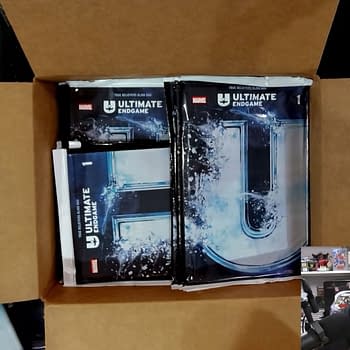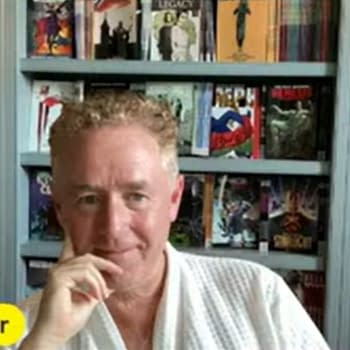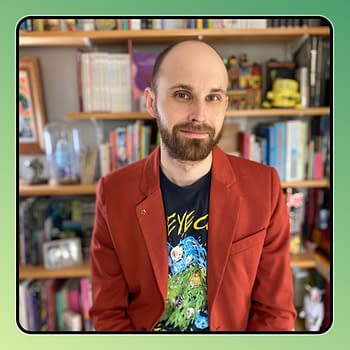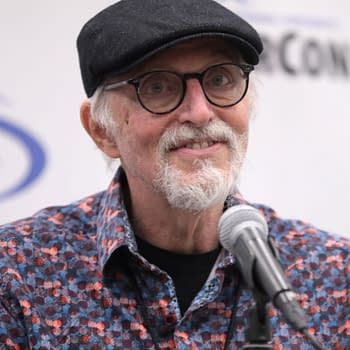Posted in: Comics, Recent Updates | Tagged: Adira Edmund, Andrew Robinson, Charlotte Fullerton, Long Beach Comic Con 2013, neo edmund, Tara Platt
Rocky Start Leads To Challenging Discussion About Strong Female Characters At LBCC
Michele Brittany, one of our West Coast correspondents, writes from Long Beach Comic Con:
I really felt I may have wasted my time as the "Beyond Clichés: Creating Awesome Female Characters for Comics, Film, & Video Games" got underway a bit late at Long Beach Comic Con and then the lights started oscillating between going out, leaving us in near darkness, to the lights coming back on temporarily before starting the cycle all over again. It played havoc with my efforts to take notes, but as they say in show business, "the show must go on!" So in spite of the lights, moderator Adira Edmund persevered with introducing the panelists for the hour-long discussion that would hopefully educate the audience about moving beyond the clichés that have been overused.
Neo Edmund, author of A Tale of Red Riding: Rise of the Alpha Huntress (Wayward Media, 2012), started the discussion by leading off that he encountered the mentality that girls were not interested in adventure stories when he was shopping his story around to executives in Los Angeles. He eventually decided he would publish the story as a novel so that he could maintain the integrity of his characters. When he pitched an adventure with a boy and a girl, executives wanted the girl switched to a boy.

How does a writer add that texture to their characters and specifically, the female characters? Robinson's advice to writers was straightforward: "find something of yourself that you can put in that character." In Kaijudo, Robinson revealed that he put a little bit of himself in each of the characters, although from the viewer's perspective, the characters all varied from each other.
One of the problems that face writers is the concept of the "token" character. This is often the case of the female character in a story. In Shelf Life, Platt voices Hero Lass, the lone female lead and she stated that breaking tokenism required being cognizant of the levels of engagement with each other. So in other words, the characters must be given valid feelings that make the choices of those characters feel real. Emma and Regina are a good example. They are strong, flawed, and emotional yet we are still able to identify with them. As Robinson states, "they are two sides of the same coin wanting the same thing."
Edmund said that there are some great examples of stronger characters that female in the past couple of years. Recent examples include Rapunzel from Tangled and Meredith from Brave, or from the video game world, the younger Lara Croft from the Tomb Raider reboot, Elizabeth from Bioshock Infinite, or even Ellie from The Last of Us. While all of the ladies are stronger and more interesting, for Elizabeth and Ellie at least, they assist men that lead.
Charlotte Fullerton, writer of Ben10: Omniverse and My Little Pony: Friendship Is Magic, stated that she believed that the newer writers out there have grown up on shows such as Buffy The Vampire Slayer that females are able to be their own person and are no longer damsels in distress, waiting to be saved. It was time to embrace diversity. She stated she was surprised by what she could do with the stories she was writing for My Little Pony, but she said it was a matter of throwing out the preconceived notions and clichés of the 80s version of the show. She admitted that her preconceived notions are what kept her from watching Buffy because from the trailers of the show, it didn't spotlight Sarah Michelle Gellar as a strong lead character and Fullerton thought it was along the lines of the original movie.
While the hour was quickly up, a lot of territory was covered that a writer could use for his or her own stories. If nothing else, each of us should have taken that the foundation of the female character needed to be developed with diverse traits and with strength to be their own person, resulting in a character that wasn't cookie cutter nor could be considered "token" to the story being told. Hence a more interesting character – female or male – that moved beyond those tried and true clichés that have worn out their welcome in today's storytelling.
Michele Brittany is an independent pop culture scholar and semi-professional photographer currently editing an upcoming anthology on the influence of James Bond on popular culture. She regularly posts reviews and analysis on the spy/espionage genre on her blog, Spyfi & Superspies.
















